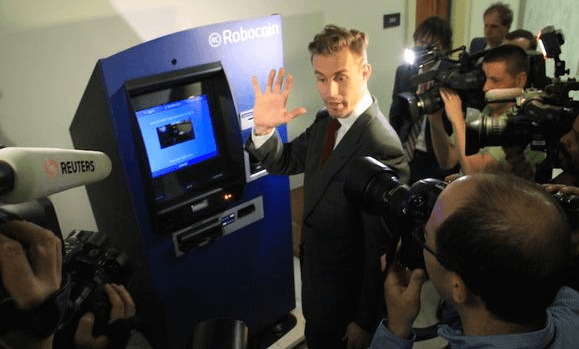[tweetable alt=””]”We figured it would be a fun little side project and a good way to help move Bitcoin forward. 10 months and $25,000 later, boy were we wrong.” – Andrew Wilkinson[/tweetable]
Recently, Andrew Wilkinson (founder of Metalab) and Rajiv Khaneia (founder of Sparklit) posted about their experience trying to buy a Bitcoin machine from Robocoin, a Bitcoin ATM provider. I’d like to tell you that Andrew and Rajiv had an amazing experience, dancing and skipping along the customer journey in their goal to bring this new currency to their hometown of Victoria, BC. I’d love to tell you that the Robocoin CEO Jordan Kelley was helpful, courteous and timely in his responses to ensure these customers got what they paid for and to make sure they had a strong, mutually beneficial relationship.
I’d love to, but I can’t.
If you have a moment, I’d suggest reading through Andrew and Rajiv’s documented misadventures. It lays out from Day 1 to 10 months later… Yes, I said 10 months… their attempt at purchasing a Robocoin ATM.
Oh, and for additional enjoyment, check out the REDDIT discussion too.
How could this have been handled better? Oh, lots and lots of ways, but I’m going to fixate on five. Five ways Robocoin could have made the customer experience a positive one, or a little bit more positive, even in the face of obvious challenges.
1) It’s not about you, it’s about the customer. – In times of customer service stress, it’s best to focus on the customer and what they’re going through, not make excuses. Frank, their IT guy, sounds like someone who should never interact with the public. Being an expert on a subject doesn’t necessarily mean they should be representing your company on the front lines. Also, when a customer has issues and describes them point-by-point to be addressed after seven months of frustration, the best response is a direct one, not a few sentences on how hard you are working “drinking from a fire hose and solving problems, stabilizing the platform AND continuing to improve everyday.” And, add a $5000 restocking fee for a product that never worked in the first place, and you’ve got some great examples of a not so customer-centric business.
2) Empathy doesn’t equal helpful or useful. – CEO Jordan really didn’t have a problem apologizing. He repeatedly mentioned appreciating Andrew and Rajiv’s patience, apologized for delays and offered help…but all those words didn’t actually resolve anything. It’s important to empathize with your customers during times of miscommunication or bad experiences but you have to take that next step to actually resolving the problem. Nodding, smiling and offering a shoulder to cry on isn’t good customer service.
3) Be engaged, don’t run away. Or give the perception of avoidance. – When a customer experience is going badly, the customer is (as is their right) focused on their issues with the company and nothing is more important until it’s fixed. It’s their world being disrupted by a promise not kept by a business. So though it may feel like a good time to go on vacation or a good idea to go “radio silent” hoping the issue goes away or referring your customer to talk to someone else, all your doing is making the matter worse.
4) Do something! – Through the 10 months of this experience, Robocoin could have, and should have, made some goodwill gesture. Your customers are feeling like they are getting stonewalled and are continually feeling frustrated with the customer experience. What to do? Add value. Even if you’re doing everything you can, you’re in the process of losing customers and future customers with the negative word of mouth. A discount, a free service, anything to show that you’re thinking of your consumer’s plight and what they’re going through will only help.
5) Take the blame. – Robocoin did an amazing job of trying to avoid blame in this scenario. Whether it was trying to excuse their less-than-friendly IT guy Frank’s behaviour because he’s usually great but “takes a fair bit of shit” or trying to distance themselves from blame by stating they are simply the reseller of the kiosks, not the manufacturer, it all looked shady. Taking responsibility for your actions goes a long way to building or maintaining a relationship with your customer.
Andrew and Rajiv’s final comment:
Oct 13, 2014: So here we are, 10 months later. To date, we’ve received no refund or further communications from Jordan. We’re prepared to take legal action, but we figured we’d give Jordan a taste of internet justice first. So far we’ve spent $20,000 kiosk. 6 months of rent at $250/mo: $1,500. Shipping both ways: $4,000. Total cost so far: $25,500.
We wanted to share this story in hopes that we can dissuade anyone who’s thinking about buying a Robocoin. We’d also love to hear from any other Robocoin operators about their experiences, so we can share them here. We’ve already spoken to a couple, and it seems like there are bad experiences all around.
So after looking at their story, do you think there’s anything else Robocoin could have done differently to provide a better customer experience?






